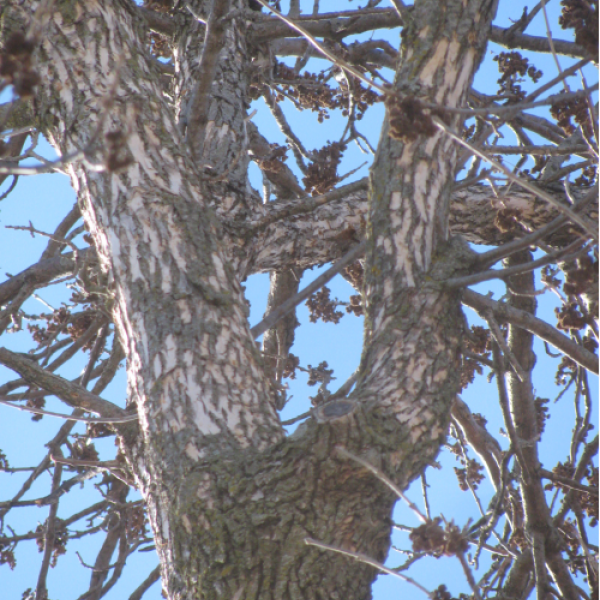
News Source
With the leaves long gone from the trees, now is the ideal time to check ash trees for any sign of the emerald ash borer.
The bug, which originated in Michigan in 2002 after likely coming in ash wood used in packing or crating from Russia, China, Japan or Korea, can destroy ash trees, weakening them beyond repair.
“Right now with the leaves off, you can really see damage by wood peckers,” said Nathan Unsworth administrative park superintendent.
Wood peckers do what is called flecking by chipping away at the bark to expose the emerald ash borer larva, which they eat. The evidence of flecking is shown by lighter colored bark and usually occurs in smaller branches towards the top of the tree. Flecking identification is how the emerald ash borer was found in Newton last year.
Once it is found in a community it is usually believed to have been there for about three to four years prior to its discovery. The cheapest option to deal with the bug is cutting down the tree and planting a new one, if desired. The condition of the tree and location on the property should be looked at before doing any chopping.
“You have to take into account where your tree is, if it’s on the south side of your house, because of energy efficiencies that come with (keeping the tree),” Unsworth said.
There are a couple of treatment options that vary depending on the size of the tree. If it is a large tree, an injection method, which puts pesticides directly into the tree, works to kill the bugs. It is the only method that is effective in large ash trees. For smaller trees, a ground treatment is available. The tree would soak up the pesticides through the roots to exterminate the bugs. With that treatment, caution would need to be taken if the tree is close to a storm drain because of run off. It is also only suggested if the tree has 30 percent or less die back. Treatment is most effective if done before spring hits, especially with smaller trees.
If no treatment is given or the tree is not taken down, long term effects can damage the tree and make it unsafe.
“Over time, the larva of the emerald ash borer actually eats the living tissue within the tree, which will further kill and weaken the tree throughout,” Unsworth said.
If that occurs, larger branches will begin to fall. Also, Unsworth found tree companies have a harder time dropping the tree because it becomes very brittle.
Currently, it is not suggested to plant any sort of ash tree in Iowa. There is hope that someday there will be an ash tree that can withstand the bug.
“Hopefully after the wave of this moves through there will be some trees that show a little more resistance to the bug and those will be the trees they start developing the strains to make them emerald ash borer resistant,” Unsworth said.